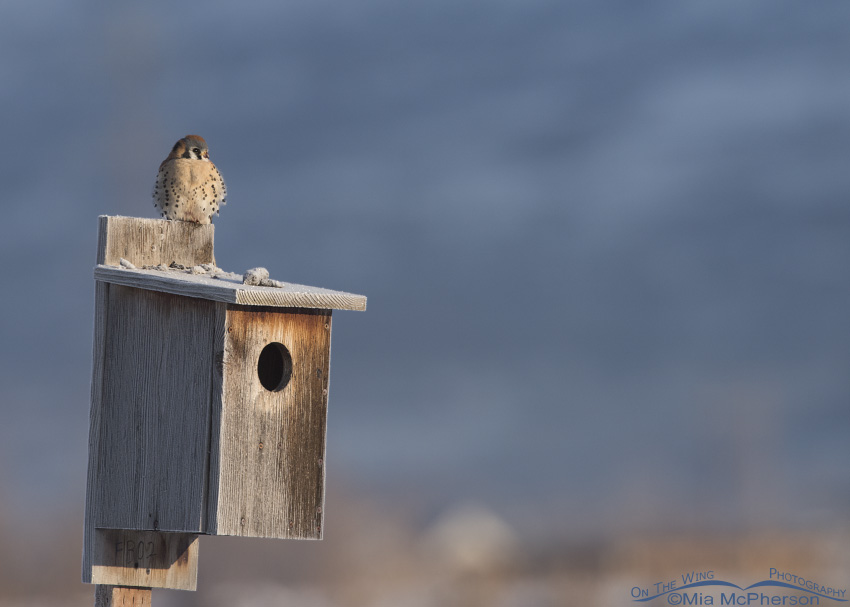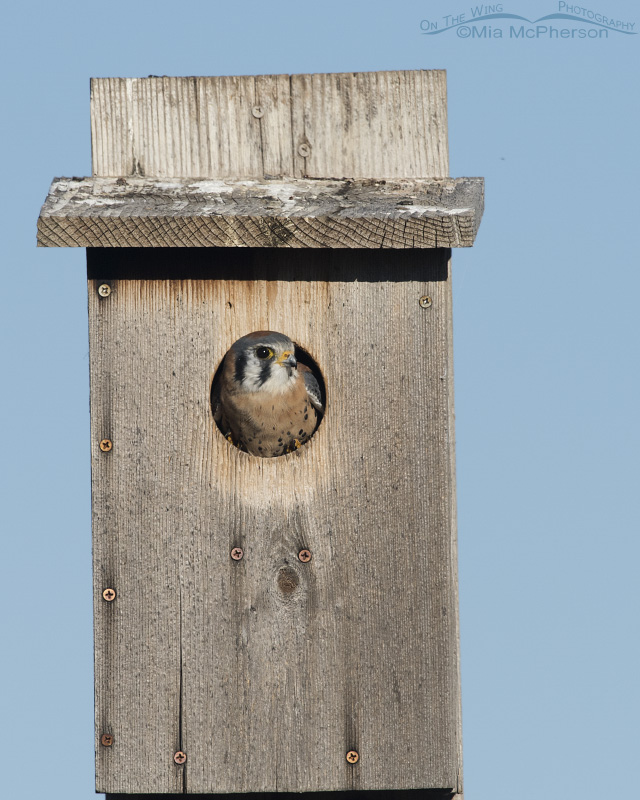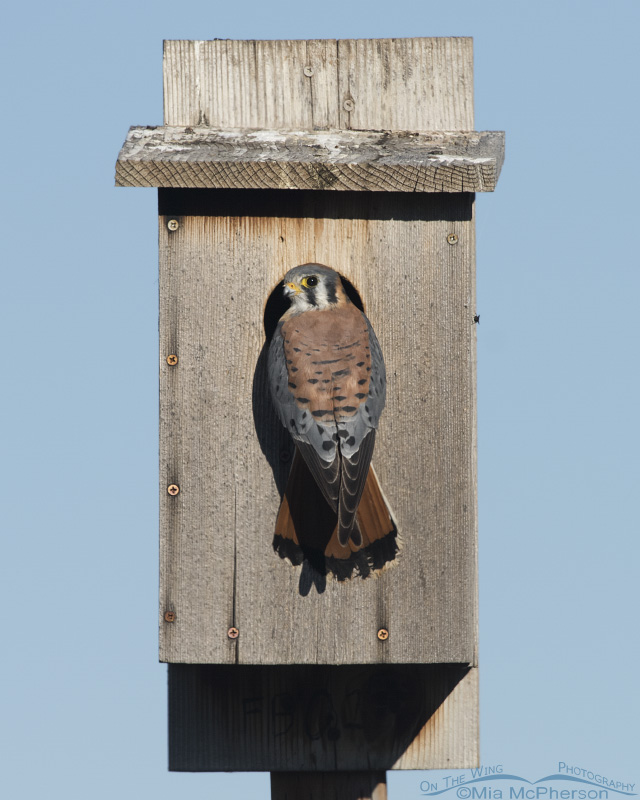Male American Kestrels
 Male American Kestrel on a frosty nest box – Nikon D810, f7.1, 1/1250, ISO 500, Nikkor 500mm VR with 1.4x TC, natural light, not baited
Male American Kestrel on a frosty nest box – Nikon D810, f7.1, 1/1250, ISO 500, Nikkor 500mm VR with 1.4x TC, natural light, not baited
Normally I prefer my bird images to be created in natural settings without the visible hand of man but in some cases I like having the hand of man visible. I don’t mind having nest boxes in my images when it comes to cavity nesting birds and a big part of my reasoning behind that is that nest boxes have helped cavity nesting birds in big ways.
Prior to man’s arrival there were plenty of dead trees that had natural cavities or cavities created by woodpeckers and other primary cavity nesters which were later used by secondary cavity nesting birds to raise their broods in. After man’s arrival those dead trees were brought down, some times for firewood, some times because the dead trees were a safety hazard and some times simply because people think dead trees are ugly.
Personally I left dead or dying trees (standing or fallen) in my own yard unless they were a safety hazard in my own yard in Virginia because they brought in birds like Pileated, Downy and Hairy Woodpeckers that fed on insects and grubs they found inside them. I didn’t see them as ugly, I saw them as potential food sources for the birds and as places where the birds and other creatures could find refuge.
I digress, back to nest boxes. Today there simply aren’t enough natural cavities for secondary cavity nesting birds and nest boxes; though man-made, have helped secondary cavity nesting birds make a come back which include American Kestrels, bluebirds, swallows and other secondary cavity nesters.
So, when I see a nest box… I am grateful for the home they provide for these birds. I’m also thankful for the people who care enough about the birds to provide the nest boxes and who maintain them.
About the image above; it was taken in the first part of January on a chilly morning and the frost on the box still hadn’t melted yet. On top of the box there are some frost covered pellets probably expelled by the hawks or owls that can be found at Farmington Bay WMA.
 Male American Kestrel inside a nest box – Nikon D810, f7.1, 1/2000, ISO 400, +0.3 EV, Nikkor 500mm VR with 1.4x TC, natural light, not baited
Male American Kestrel inside a nest box – Nikon D810, f7.1, 1/2000, ISO 400, +0.3 EV, Nikkor 500mm VR with 1.4x TC, natural light, not baited
Most of the American Kestrels here in Utah are nonmigratory and they hang around all year long. About this time of the year the males and females form new pair bonds or maintain their previous pair bond and they can often be seen perched close to each other on power lines, poles or the tops of trees. Male American Kestrels look for and locate potential nesting cavities within their territories and inspect them prior to the nesting season.
 American Kestrel male checking out a nest box – Nikon D810, f7.1, 1/2000, ISO 400, +0.3 EV, Nikkor 500mm VR with 1.4x TC, natural light, not baited
American Kestrel male checking out a nest box – Nikon D810, f7.1, 1/2000, ISO 400, +0.3 EV, Nikkor 500mm VR with 1.4x TC, natural light, not baited
Then when the nesting season begins the male kestrels take the females to the cavities and the females make the final selection of which cavity she wants to raise her brood in.
Without man made nest boxes populations of American Kestrels would decline and in some areas they are already declining.
So when I take a photo of an American Kestrel perched on a nest box I don’t see it as a glaring “hand of man” in a negative way at all.
I see the goodness, compassion and caring of the people who put the box there. I see hope for the future of American Kestrels.
Life is good. And some people make it better.
Mia
Click here to see more of my American Kestrel photos plus facts and information about this species.


Great photos and you are right about the value of nest boxes. I monitor three Bluebird Trails in California and I love seeing my “offspring” in places where there were previously no bluebirds. I have a friend that monitors 75 Kestrel boxes in the California Central Valley. I consider him exceptional, if not slightly crazy!
Great images and info. We bought a large box for bats but haven’t put it up yet.
Lovely Kestrel pictures. Better a wooden nest-box than a metal road sign. Plus the Kestrel in the door way of the box gives a feeling of looking towards the future and family responsibility
A beautiful series of a little treasure…mankind has taken so much from ALL wildlife that I feel an obligation to help however, whenever,wherever I can…that definiyely includes nesting boxes, platforms and feeders….the alternative is too sad.